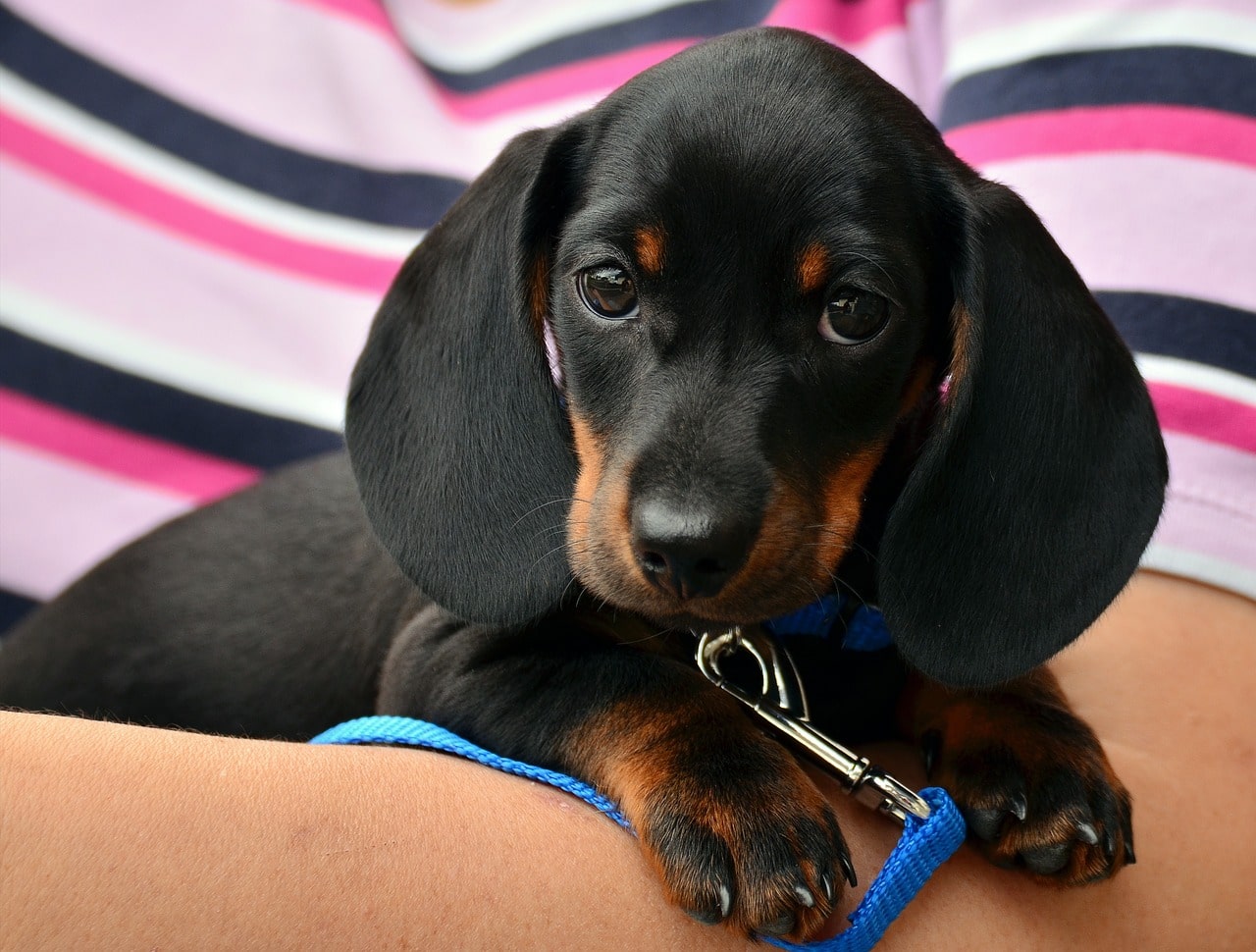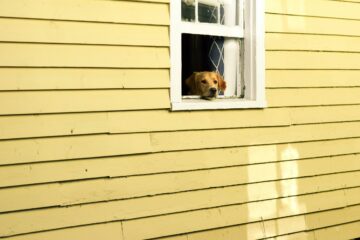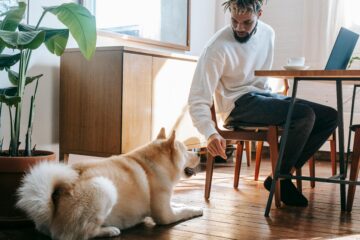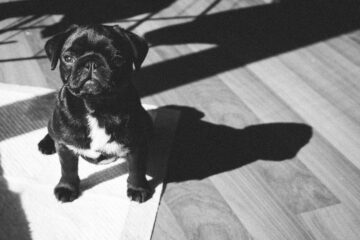Welcoming a new puppy into your home is an exciting adventure filled with love and companionship.
During the crucial first week, building a strong bond is essential for a lasting and trusting relationship
In this guide, we’ll explore essential 12 tips on How to Bond with Your Puppy in the First Week with your furry friend right from the start.
From building trust to creating a nurturing environment, these insights will help you lay the foundation for a loving and enduring relationship with your new puppy.
Let’s make the most of these initial days and set the stage for a lifetime of companionship.
Table of Contents
Creating Pawsitive Connections: How to Bond with Your Puppy in the First Week

1] Create a Comfortable Space: Fostering a Sense of Security
Setting up a comfortable and secure space for your puppy goes beyond providing a cozy bed and familiar toys.
Consider the placement of this space within your home – a quiet corner away from high traffic areas can offer a retreat where your puppy feels safe.
Gradually introduce your puppy to this area, using positive reinforcement like treats and praise.
Observe their reactions and adjust the space to align with their preferences, ensuring it truly becomes a sanctuary they willingly retreat to.
2] Establish a Routine: Providing Predictability
The importance of a routine extends beyond feeding and bathroom breaks.
It also involves consistent times for play, training sessions, and even quiet bonding moments.
Dogs thrive on predictability, and a well-structured routine helps your puppy understand and anticipate daily activities.
Be flexible, but try to maintain a general schedule.
Consistency in routine contributes to a sense of stability, aiding your puppy in adjusting seamlessly to their new home.
• Routine extends beyond feeding and bathroom breaks • Includes consistent times for play, training, and bonding • Dogs thrive on predictability and routine • Maintain a general schedule for stability and seamless adjustment.
3] Gentle Handling: Building Trust Through Touch
Gentle handling and touch create a foundation of trust between you and your puppy.
Gradually introduce handling by starting with short sessions of gentle petting and gradually progressing to activities like nail trims and tooth brushing.
Pay attention to your puppy’s body language, ensuring they are comfortable with each interaction.
Positive associations with touch enhance the bond, making grooming and handling a positive experience for both you and your furry companion.
4] Playtime Fun: Encouraging Joyful Interactions
Playtime serves as a crucial avenue for bonding.
Observe your puppy’s preferences when it comes to toys – some may enjoy fetch, while others prefer tug-of-war.
Rotate toys to keep playtime exciting, and engage in activities that match your puppy’s energy levels.
The goal is to create a positive association with you as the source of fun, reinforcing the idea that interacting with you brings joy and excitement.
5] Positive Reinforcement: Rewarding Good Behavior
Positive reinforcement is a powerful tool in shaping your puppy’s behavior.
Beyond treats, use verbal praise and affection to reward good behavior.
Be consistent in your timing – the reward should immediately follow the desired behavior.
This strengthens the connection between positive actions and positive outcomes, encouraging your puppy to repeat these behaviors and fostering a relationship built on trust and cooperation.
6] Mealtime Bonding: Sharing Special Moments
Hand-feeding during mealtime can be an intimate bonding experience.
This practice not only associates you with nourishment but also allows for close interaction.
While hand-feeding, incorporate gentle strokes and verbal praise.
This shared mealtime ritual becomes a special moment, reinforcing the emotional connection between you and your puppy.
Mealtime bonding is a powerful way to create a positive association with the caregiver. It establishes trust and deepens the connection between the puppy and the owner
7] Exploration Together: Fostering Curiosity
Supervised exploration is an essential aspect of acclimating your puppy to their new environment.
As they investigate various areas of your home, provide gentle guidance and encouragement.
Use this time to introduce new scents, sounds, and surfaces.
By being part of their exploration journey, you reinforce your role as a supportive and protective figure, building your puppy’s confidence and trust.
8] Sleeping Close: Building Proximity
Sleeping arrangements play a significant role in bonding.
Whether your puppy sleeps in the same room or in a crate, prioritize proximity.
Being close during sleep fosters a sense of security for your puppy.
If using a crate, gradually associate it with positive experiences through treats and comfort items.
The goal is to create a sleeping environment that enhances the bond between you and your puppy, making bedtime a secure and comforting routine.
9] Training Sessions: Building Communication
Basic training sessions are not just about teaching commands; they are opportunities to enhance communication and understanding.
Use positive reinforcement techniques to teach commands like sit, stay, and come.
Keep sessions short and enjoyable, maintaining a positive atmosphere.
Clear communication during training builds trust, as your puppy learns to respond to your cues and directions.
10] Quiet Bonding Time: Enjoying Tranquil Moments
Amidst the hustle and bustle, allocate specific times for quiet bonding moments.
This could be a gentle grooming session, a cuddle on the couch, or simply sitting together in a calm environment.
Remove distractions to create an atmosphere of tranquility.
These moments strengthen the emotional connection, allowing you and your puppy to relax and enjoy each other’s company without external interruptions.
11] Veterinary Checkup: Prioritizing Health and Well-Being
Scheduling a veterinary checkup in the first week is a proactive step in ensuring your puppy’s health.
Beyond vaccinations, this visit allows the vet to assess overall well-being and address any concerns.
Regular vet checkups not only demonstrate your commitment to their health but also provide an opportunity for professional guidance on nutrition, preventive care, and any specific needs your puppy may have.
12] Patience and Understanding: Nurturing a Lasting Bond
Patience is the cornerstone of building a lasting bond. Every puppy is unique, and the adjustment period varies.
Celebrate small victories and progress, and be understanding of any challenges.
Learn to interpret your puppy’s cues, whether it’s expressing joy, fear, or curiosity.
The journey of bonding is ongoing, and practicing patience ensures a positive and resilient connection as you navigate the highs and lows together.
How to Bond with Your Puppy in the First Week: Frequently Asked Questions
Is it normal for a puppy to be shy during the first week?
Yes, it’s entirely normal for a puppy to be shy or reserved during the initial days in a new environment. Patience and gentle encouragement will help them acclimate and build confidence.
Can bonding with my puppy prevent behavioral issues?
Yes, a strong bond between you and your puppy can contribute to preventing behavioral issues. Positive reinforcement and consistent training create a foundation for a well-behaved and responsive companion.
Should I introduce my puppy to other pets during the first week?
Introducing your puppy to other pets should be done gradually and under supervision. Allow controlled interactions to ensure a positive introduction and minimize stress for all animals involved.
How can I make grooming a bonding experience?
Make grooming a positive and gentle experience by using treats, praise, and soft brushes. Gradual introductions to grooming routines create a bond built on trust and comfort.
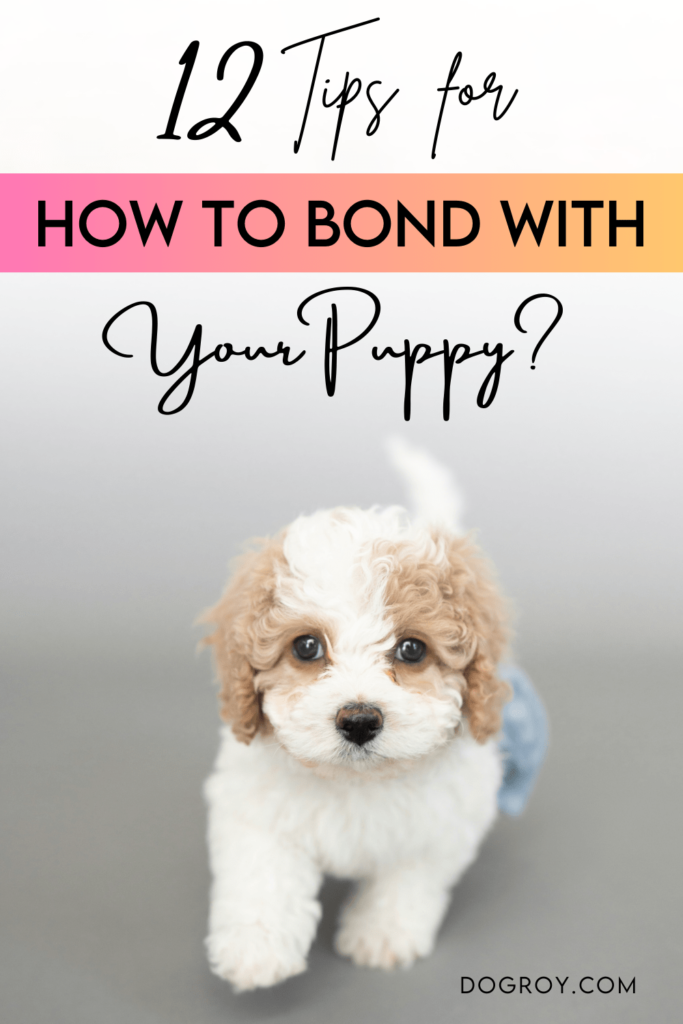
Conclusion:
As you navigate the first week with your new puppy, the importance of building a strong and positive bond cannot be overstated.
By following these 12 tips on “How to Bond with Your Puppy in the First Week,” you’ll lay the groundwork for a strong, loving, and enduring relationship with your new furry family member.
Remember, patience is key, and each interaction contributes to the foundation of your bond.
Embrace the joy and challenges that come with puppyhood, and celebrate the milestones achieved during this initial week.
With your commitment to creating a nurturing environment, you’re laying the groundwork for a lifetime of companionship filled with loyalty, joy, and cherished moments.
May your journey with your new puppy be filled with wagging tails, playful antics, and a bond that only grows stronger with time.

